Abstract
The affected-pedigree-member (APM) method of linkage analysis is a nonparametric statistic that tests for nonrandom cosegregation of a disease and marker loci. The APM statistic is based on the observation that if a marker locus is near a disease-susceptibility locus, then affected individuals within a family should be more similar at the marker locus than is expected by chance. The APM statistic measures marker similarity in terms of identity by state (IBS) of marker alleles; that is, two alleles are IBS if they are the same, regardless of their ancestral origin. Since the APM statistic measures increased marker similarity, it makes no assumptions concerning how the disease is inherited; this can be an advantage when dealing with complex diseases for which the mode of inheritance is difficult to determine. We investigate here the power of the APM statistic to detect linkage in the context of a genomewide search. In such a search, the APM statistic is evaluated at a grid of markers. Then regions with high APM statistics are investigated more thoroughly by typing more markers in the region. Using simulated data, we investigate various search strategies and recommend an optimal search strategy that maximizes the power to detect linkage while minimizing the false-positive rate and number of markers. We determine an optimal series of three increasing cut-points and an independent criterion for significance.
Full text
PDF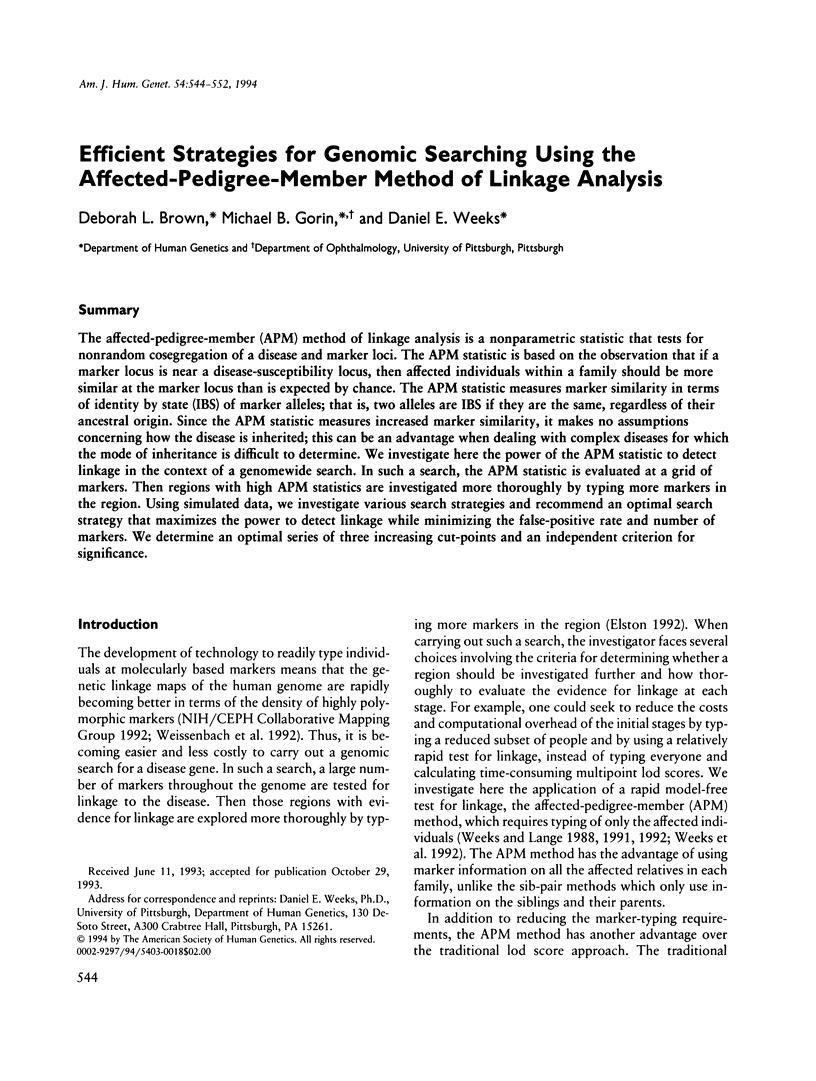
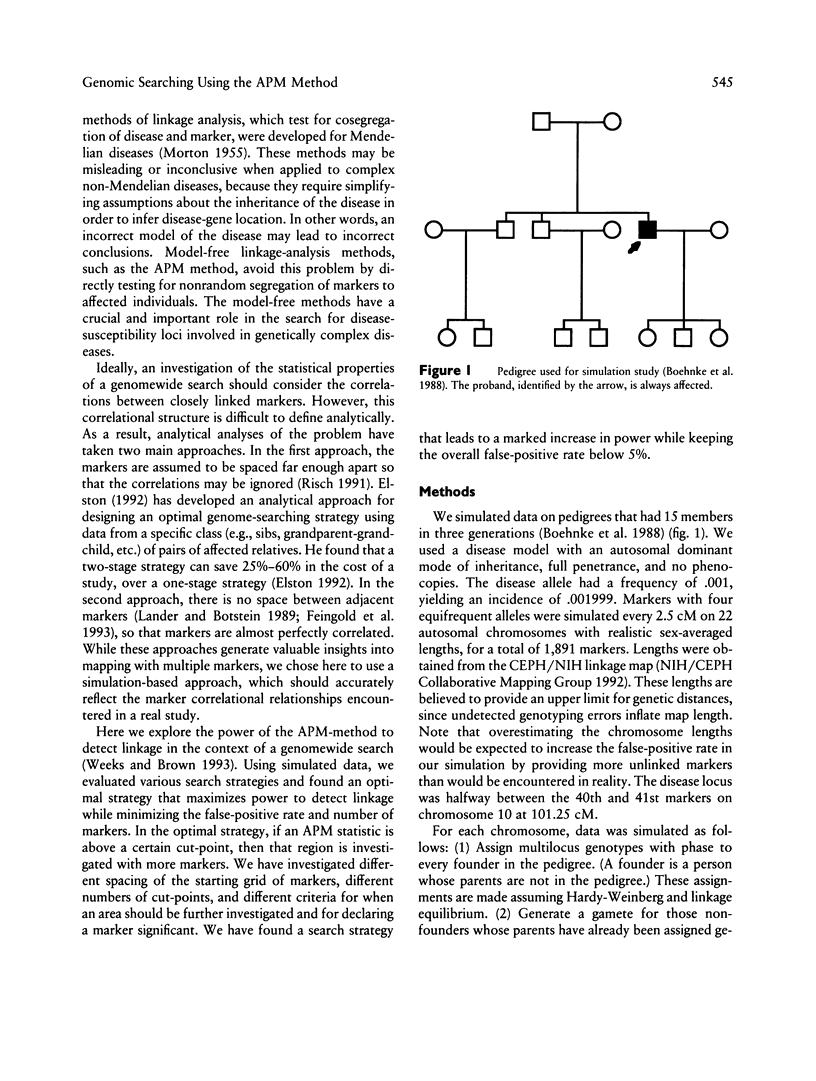
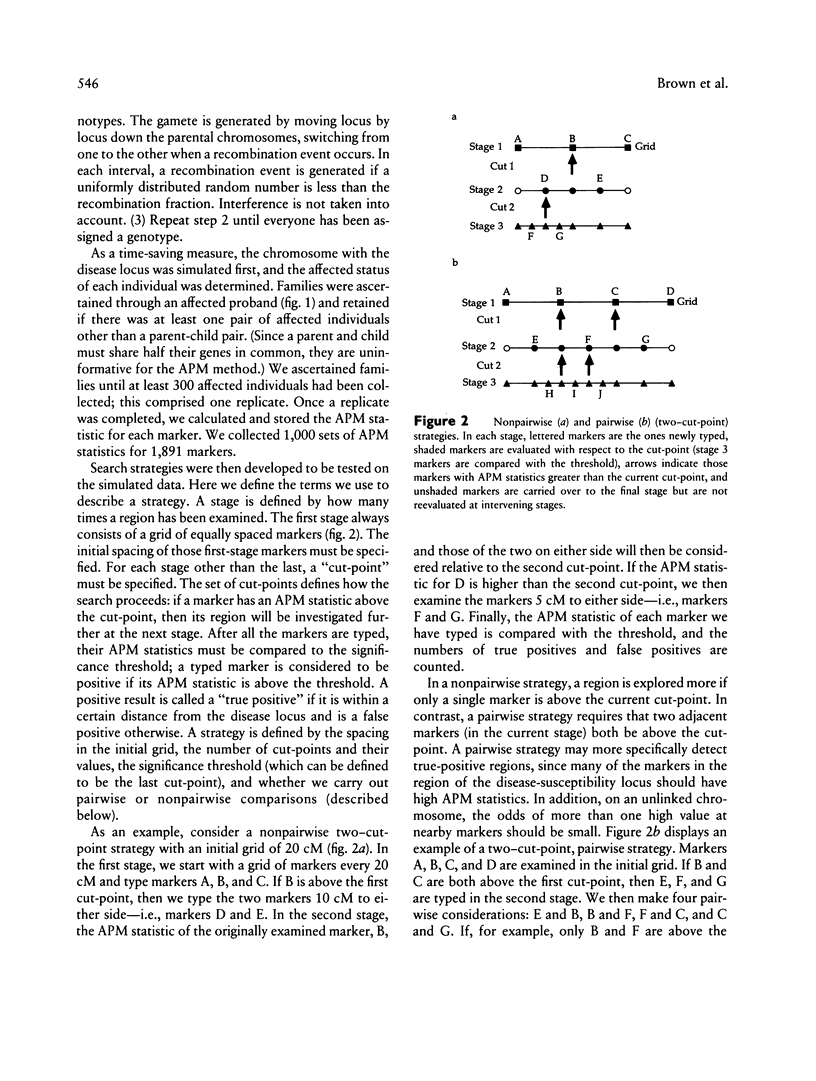
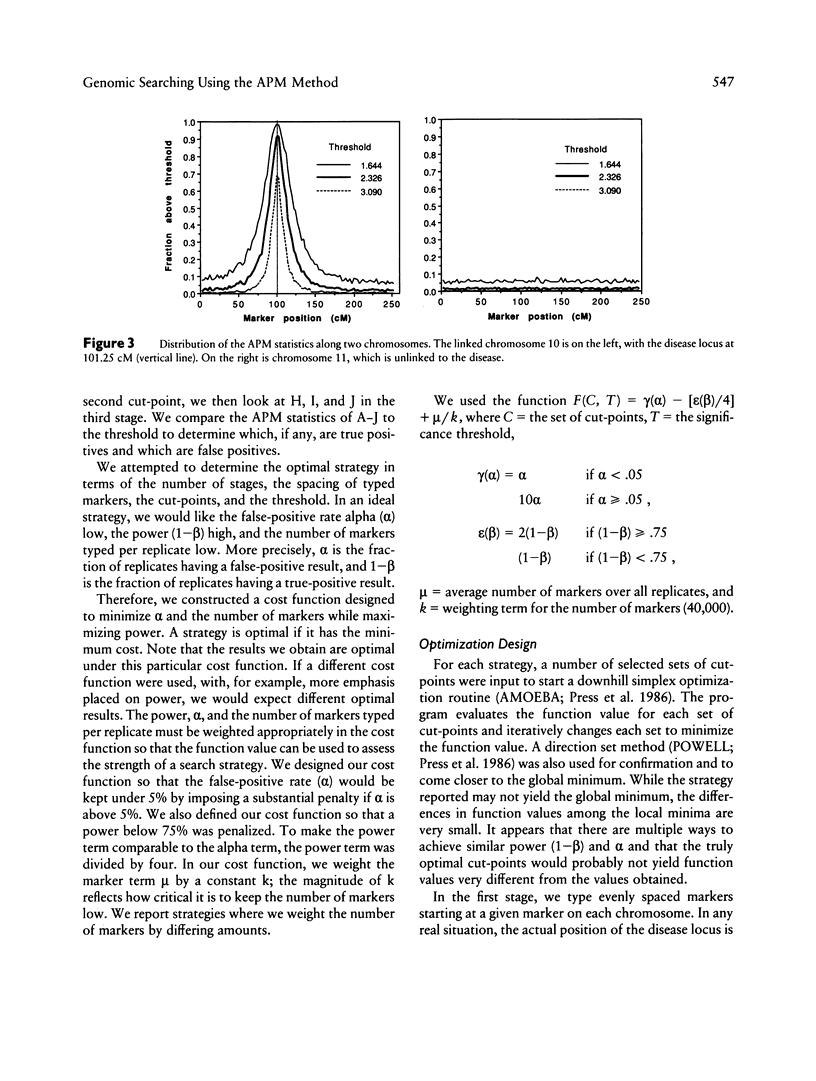
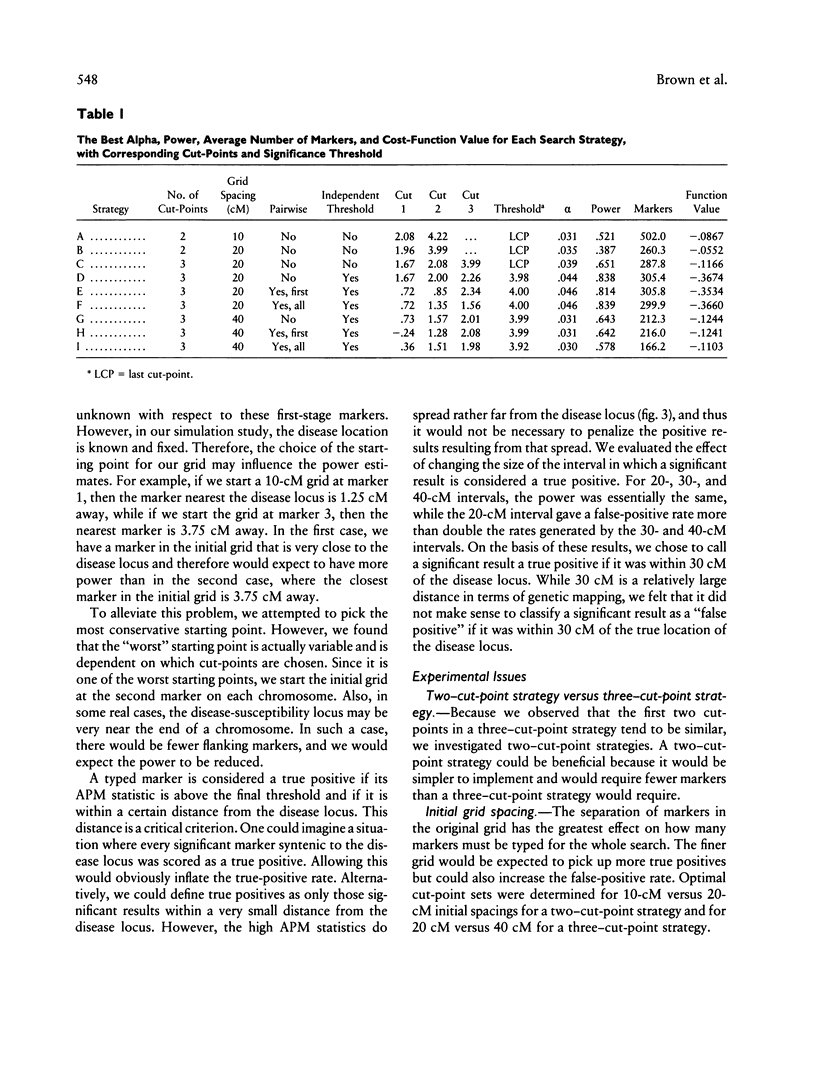
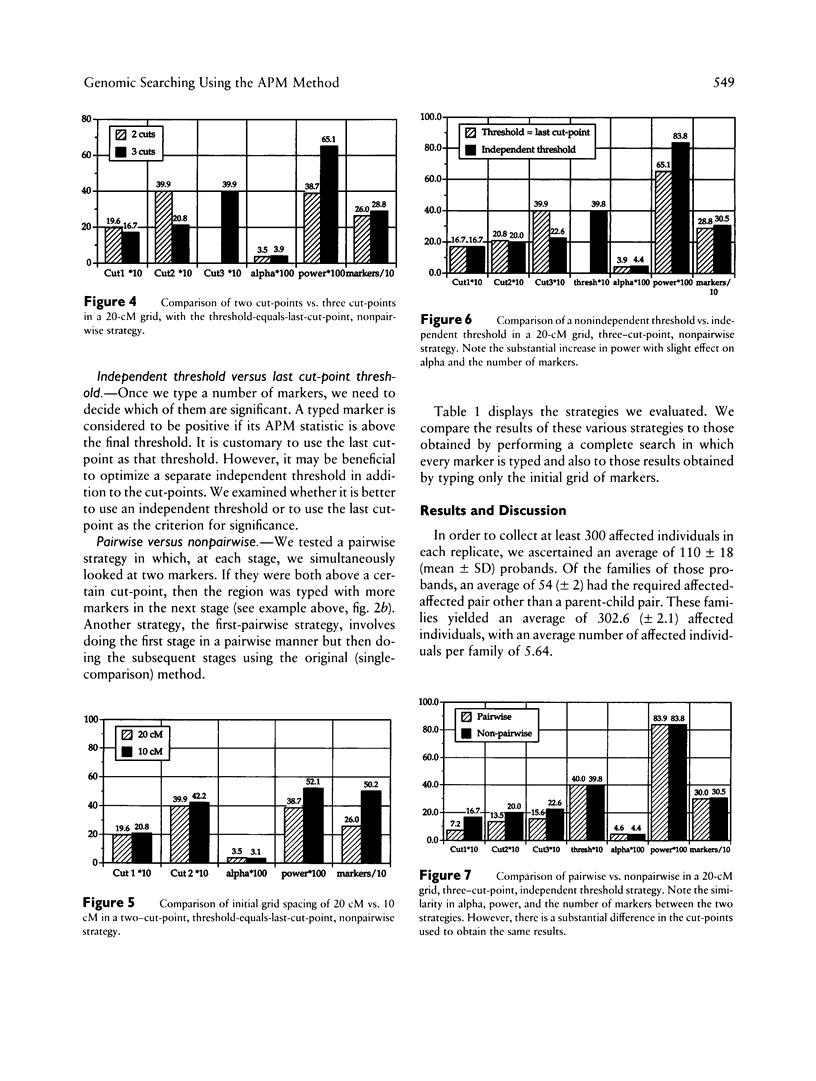
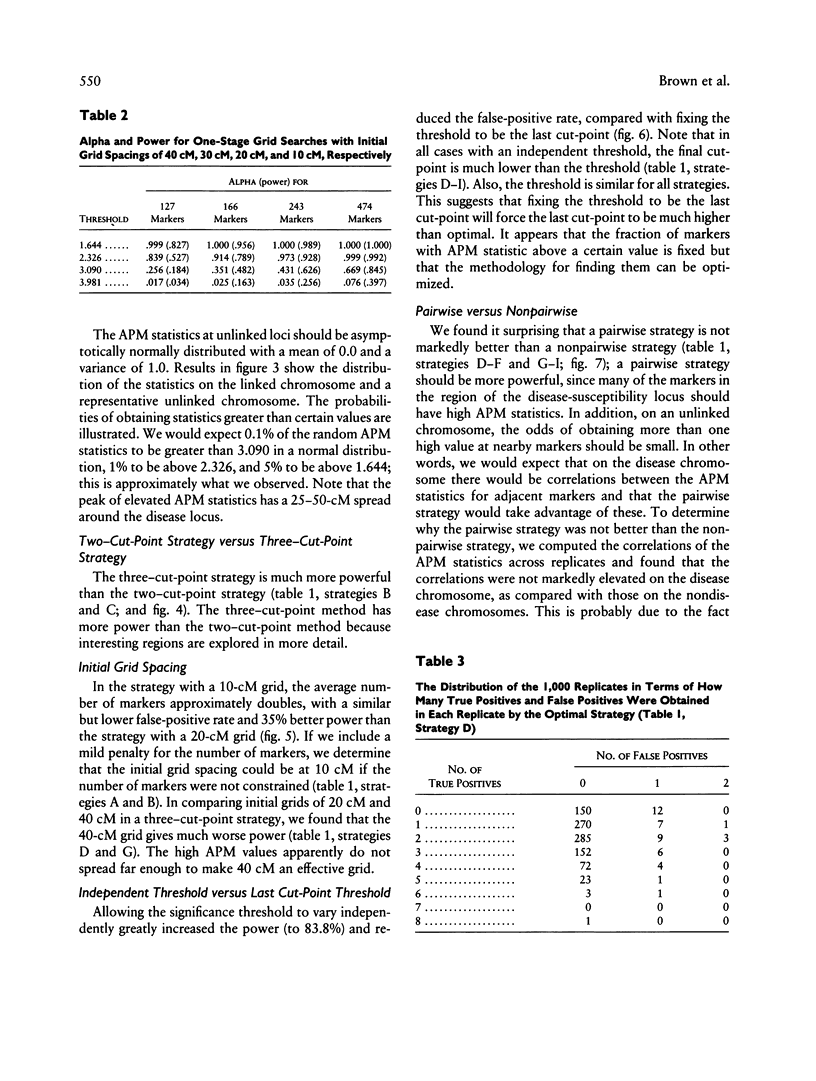
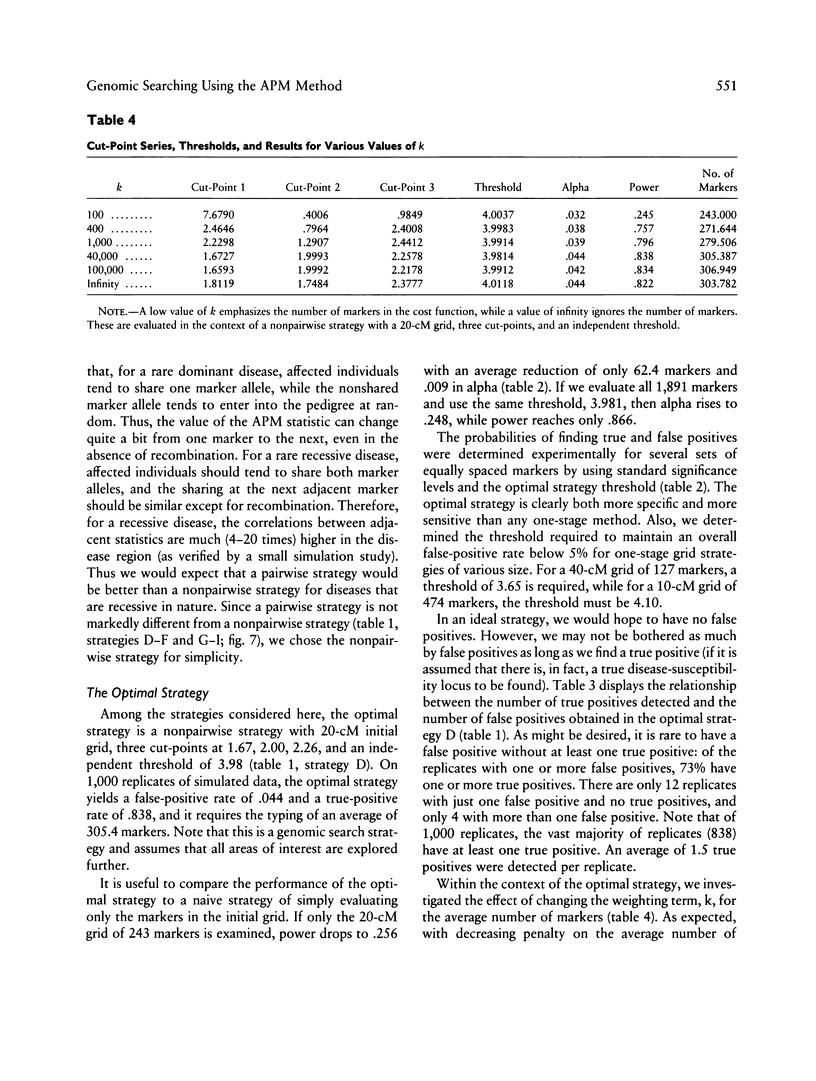
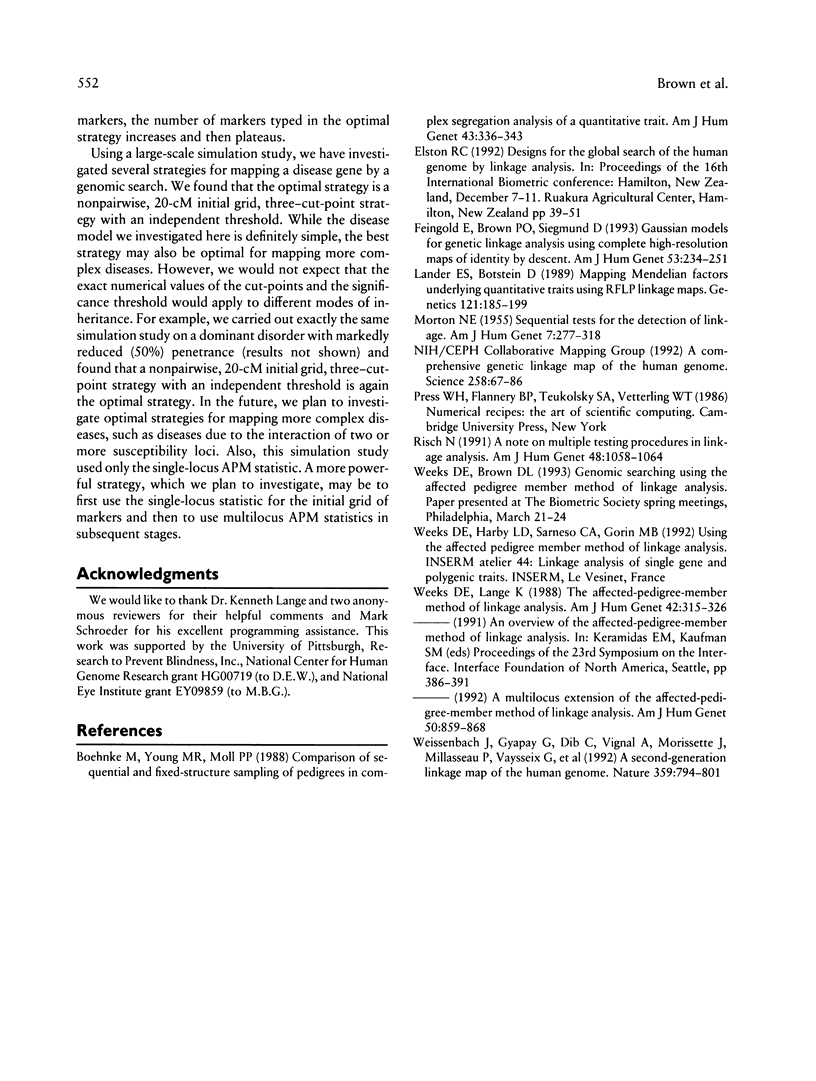
Selected References
These references are in PubMed. This may not be the complete list of references from this article.
- Boehnke M., Young M. R., Moll P. P. Comparison of sequential and fixed-structure sampling of pedigrees in complex segregation analysis of a quantitative trait. Am J Hum Genet. 1988 Sep;43(3):336–343. [PMC free article] [PubMed] [Google Scholar]
- Feingold E., Brown P. O., Siegmund D. Gaussian models for genetic linkage analysis using complete high-resolution maps of identity by descent. Am J Hum Genet. 1993 Jul;53(1):234–251. [PMC free article] [PubMed] [Google Scholar]
- Lander E. S., Botstein D. Mapping mendelian factors underlying quantitative traits using RFLP linkage maps. Genetics. 1989 Jan;121(1):185–199. doi: 10.1093/genetics/121.1.185. [DOI] [PMC free article] [PubMed] [Google Scholar]
- MORTON N. E. Sequential tests for the detection of linkage. Am J Hum Genet. 1955 Sep;7(3):277–318. [PMC free article] [PubMed] [Google Scholar]
- Monrad E. S., Matsumori A., Murphy J. C., Fox J. G., Crumpacker C. S., Abelmann W. H. Therapy with cyclosporine in experimental murine myocarditis with encephalomyocarditis virus. Circulation. 1986 May;73(5):1058–1064. doi: 10.1161/01.cir.73.5.1058. [DOI] [PubMed] [Google Scholar]
- Weeks D. E., Lange K. The affected-pedigree-member method of linkage analysis. Am J Hum Genet. 1988 Feb;42(2):315–326. [PMC free article] [PubMed] [Google Scholar]
- Weissenbach J., Gyapay G., Dib C., Vignal A., Morissette J., Millasseau P., Vaysseix G., Lathrop M. A second-generation linkage map of the human genome. Nature. 1992 Oct 29;359(6398):794–801. doi: 10.1038/359794a0. [DOI] [PubMed] [Google Scholar]


